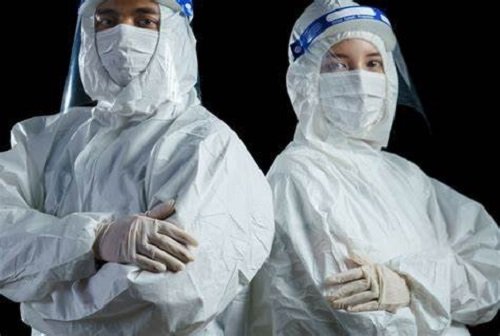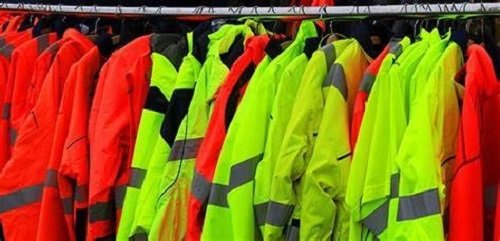Protective uniforms are not only to promote the business but also to create fairness for all workers working in the enterprise. So why not make a single uniform for all workers, and why do a risk assessment for protective clothing?
1 Why use risk assessment for protective clothing?
Workwear does not only create equality among employees. It is also a way to promote the company’s brand image. However, the use of protective clothing that does not meet the standards will cause workers to feel uncomfortable, hot, and gassy.
The inability to escape sweat will create a feeling of fatigue for workers. With lower-quality products, even sitting in an air-conditioned room with cool air, the wearer will still feel uncomfortable.
Therefore, to verify the suitability and quality of safety for workers, engineers and businesses need to pay attention and choose products that meet quality standards to protect health. Healthy workers will increase work efficiency and ensure progress.
In addition, a major problem for businesses that need to assess the risk of protective clothing is the high probability that workers and engineers will have poor-quality or unsafe clothing. equally for everyone to do.
It is a fact that for each job there will be a different level of exposure to danger, so the provision of protective clothing for workers and engineers of the enterprise will also have to be different to ensure the safety of workers in business.
It can be seen that the risk assessment for protective clothing is not only extremely important, but it also has to do with the issues of the business as follows:
- Enterprise working environment
- analyze categories and assign appropriate protective clothing.
- Determine your business’s protective clothing requirements.
After having compiled all the lists of items that need to be in protective clothing for each worker, please introduce all people working in the business to the business’s protective uniforms to make the right and timely adjustments.
To have the best assessment of the risk level of protective equipment for workers, businesses also need to consider the following important factors:
- Probability of exposure to the worker’s risk or hazard
- Workplace risk or hazard exposure
- severity of injury when a hazard or hazard occurs during work
Once the business has identified the most urgent risks, there will be a specific and detailed path to reducing those risks to the lowest possible level. Make sure your business uniform can be used in all situations and weather conditions.
2 How to carry out a risk assessment in the workplace
Risk assessment in the workplace requires consultation with employees, union representatives, and those in positions of authority in the enterprise. If the work environment is frequently exposed to risks or hazards that are particularly complex, the assessment process requires the consultation of a safety professional to ensure businesses comply with the directive. 89/391/EEC
What does the risk assessment process for protective clothing include?
The risk assessment process for personal protective clothing is to require a specific assessment of protective uniforms and personal protective equipment to ensure that they meet worker safety standards. This process includes the following:
- Businesses need to provide for the risks that protective clothing and equipment may be exposed to.
- Reduce the level of risk by providing protective gear and safety equipment.
- Information on personal protective equipment and instructions on the use of personal protective equipment for workers
It is important to note that all personal protective equipment must comply with the relevant European and national legal standards.
3 What kind of protective clothing do workers need to wear to ensure safety during work?
Different jobs with different levels of risk require different protective gear. So make a detailed list of the types of protective equipment that the business will provide to workers. Businesses need to be able to determine that.
- What protective abilities does the protective uniform have?
- Is it fireproof protective clothing?
- Are protective clothes easy to maneuver?
- What is the fabric used for protective clothing? Is its breathability and comfort guaranteed?
- Using enterprise-supplied protective gear can protect or reduce the consequences of a hazard or emergency encountered by workers.
4 requirements for protective clothing for workers
Sewing line
Are the seams of the garment safe and durable? Quality protective clothing products are meticulously sewn. The seam will remain in one position or movement.In these positions, there will usually be several stitches. For products with poor-quality fabrics, there will be stretch along the silk threads.
Fabric material
Secondly, the fabric used to sew workwear must be able to absorb sweat and resist ultraviolet rays well. The fabric must be washed many times to ensure no frayed hair and high color retention. For workers who often face dangerous environments, enterprises need to use specialized fabrics for high-risk environments.
Standard size
Third, sew workwear according to standard sizes that are suitable for the body and ensure that the wearer has a cool feeling, from the shirt brace to the buttonhole; there should be no excess yarn in the gap if there is too much. Too much will easily wrinkle the splint, making it uncomfortable to take off the shirt.
Color
Fourth, the style and color of the designed clothing must be consistent with the brand of the business and the nature of the work. If the color is too bright, it will not be suitable for employees. We should choose a simple color to create elegance in the staff’s style.
Price
Fifth, cost is an important consideration when selecting a work uniform. But price is not everything. Businesses can get some benefits from ordering in bulk. The question is, after the business orders the product, does the company survey the users? And do workers feel really comfortable with the protective clothing provided by the company?
5 Training and guidance for employees of the enterprise
Once protective gear is available for workers, enterprises need to provide the necessary information, training, and guidance on protective clothing. Workers should be provided with the circumstances and reasons why protective clothing should be used.
How to wear protective clothing and take care of their protective clothingThe purpose of all of the above is to provide adequate information about workers’ protective equipment and to help reduce the risk of using the wrong protective equipment in the environment.
Make certain that your employees understand exactly what their protective gear can protect them from so that they do not unwittingly expose themselves to potential harm when required to wear it.
- Storage: Make sure the business provides every worker with the correct storage information and training. Enterprises also need to maintain the protective uniforms of each worker.
- Cleaning: Businesses need to provide clean and hygienic protective clothing for workers. The cleaning procedure for protective clothing should be in accordance with the manufacturer’s instructions. There are certain types of protective clothing that need to be maintained after the cleaning process.
Protective clothing exposed to toxic and hazardous environments such as fuel, grease, or paint will need to be decontaminated after use. And the above processes need to be carried out by someone with the right expertise, training, and knowledge to do them properly and thoroughly.
- Inspection: Enterprises should ensure that they check protective uniforms on a regular basis. And the more detailed the inspection, the better the health of the worker will be.
6 Standards for comfort and suitability of protective clothing
In order to have comfortable work uniforms for employees, enterprises also need to ensure other objective factors about health to have the best satisfaction for their employees.
Harmlessness
Protective clothing must not adversely affect the health and hygiene of the user. Sewing materials must not release substances known to be toxic, carcinogenic, mutagenic, allergenic, reproductively toxic, or harmful under normal conditions of use. other.
Design
The design of protective clothing shall facilitate correct positioning on the user’s body and ensure that the garment remains in place for the intended period of intended use, taking into account the following factors: environmental factors along with movements and postures that the wearer may adopt during work or other activities.
Comfortable
Protective clothing shall provide the user with a level of comfort appropriate to the level of protection required against the existing hazard, ambient conditions, user activity level, and duration of use. intended use of protective clothing. Protective clothing must not:
- have rough, sharp, or hard surfaces that cause irritation or injury to the user
- Too tight, loose, and/or heavy to limit normal movement
7 Final words
Workwear uniforms contribute to building the brand of the business. And in order for a business to grow stronger, it is necessary to have a strong foundation, thanks not only to professional ability but also partly to the satisfaction and health of workers. Make sure your business has a good foundation to thrive on.
 Henry Pham (Pham Quang Anh), CEO of DONY Garment
Henry Pham (Pham Quang Anh), CEO of DONY Garment
This year, we have found that many international buyers are seeking new suppliers based in nations outside of China and Thailand to purchase many goods and products, including uniforms, workwear, reusable cloth face mask, and protective clothing.
At DONY Garment, we are proud to welcome international customers, especially those based in the US, Canada, the Middle East, and the EU market to discover the professional production line at our factory in Vietnam.
We guarantee our products are of the highest quality, at an affordable cost, and easy to transport across the world.
 Dony Garment Vietnamese Garment Factory Supplier – Apparel Clothing & Textile Manufactured. Private label clothing Produce women, men, children baby wear – Casual Clothing, Uniform, Workwear
Dony Garment Vietnamese Garment Factory Supplier – Apparel Clothing & Textile Manufactured. Private label clothing Produce women, men, children baby wear – Casual Clothing, Uniform, Workwear











 Henry Pham (Pham Quang Anh), CEO of DONY Garment
Henry Pham (Pham Quang Anh), CEO of DONY Garment



